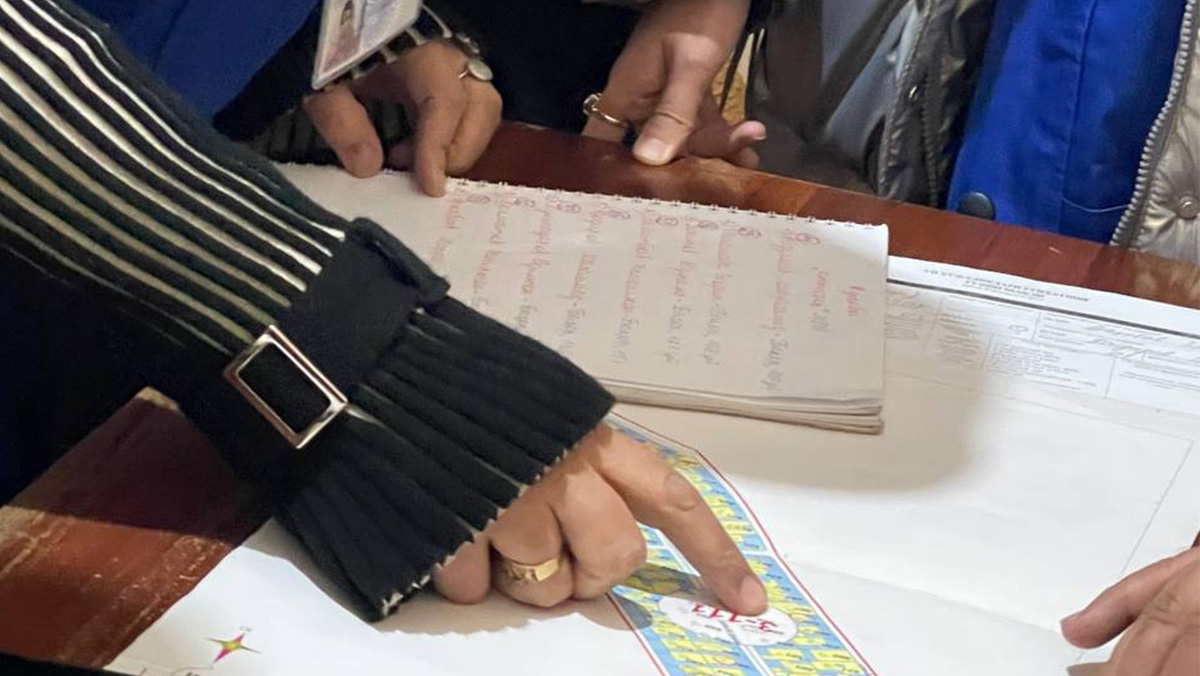
The 2030 Agenda requires effective collaborations between all partners to achieve the 17 Sustainable Development Goals (SDGs). The Multiple Indicator Cluster Surveys (MICS) is a household survey programme developed and supported by UNICEF and conducted by national statistical offices (NSOs) for monitoring progress toward national goals and global commitments such as SDGs. It represents a strong partnership between national statistical systems, UNICEF and other stakeholders to improve data availability, quality and
disaggregation.
Six rounds of MICS have been implemented since the mid-1990s, with the seventh round starting in 2023. Globally, 351 surveys have been conducted by 118 countries, 59 of these surveys in the UNECE region. MICS provides statistically sound and internationally comparable data essential for developing evidence-based policies and programmes, and monitoring progress toward national goals and global commitments. It is a major data source for tracking progress toward the SDGs. Out of the 231 SDG indicators, 80 can be monitored through household surveys. MICS currently allows the monitoring of 33 SDG indicators under 11 different goals. With the addition of new indicators, this will further increase to cover about half of all household survey-based SDG indicators. Apart from governments, UNICEF, UNFPA, USAID, European Commission, Swedish International Development Cooperation Agency (Sida), Swiss Agency for Development and Cooperation
(SDC), and the World Bank have been the major partners and donors for MICS in the region.
The availability of disaggregated data by many potential markers of inequity and discrimination makes MICS a powerful tool to measure how countries are implementing the principle of the 2030 Agenda to leave no one behind. In some countries, sub-national surveys, such as MICS in Roma settlements, provide even further insights into the situation of the most vulnerable children and families. Some countries in the region, such as Serbia, Turkmenistan, Kyrgyzstan, and North Macedonia, participated in most of the previous rounds,
providing valuable trend data for a number of indicators. For example, figures from the Serbia MICS show the situation of school attendance at the national level and for children living in Roma settlements.
School attendance and completion cascade, Serbia and Serbia Roma settlements, 2019 MICS
NSOs have a comprehensive set of tools guiding them through every step of the MICS process – from planning, design and data collection in the field to data processing, analysis, interpretation, documentation and dissemination. Albeit not its primary objective, MICS has helped develop transferable knowledge within NSOs that are used in other surveys while enhancing the understanding of indicators within the whole NSS in the country.
MICS measures a range of indicators for households, women and various age groups of children. Many indicators have specific age groups as their denominators, in line with the SDG indicator definitions. For example, the prevalence of the SDG indicators related to nutrition is measured for all children under five, while the immunization rates are calculated for children aged 24 to 35 months. One of the challenges in developing the sampling strategy for usual household surveys from the perspective of children is not having enough
households with children in the sample. The application of oversampling of households with children in MICS surveys has helped overcome this while keeping the sample size manageable.
MICS has allowed countries in the region to collect data on some topics and indicators for the first time, such as violence against children, early childhood development, disability, coverage with social protection etc. The introduction of new modules, such as the child and adult functioning modules and questions on migration, has helped put MICS countries in a more advantageous position than others in terms of disaggregation by disability and migratory status. Almost all of the 16 countries out of 54 in the UNECE region have data on SDG indicator 16.2.1 on violence against children thanks to the MICS programme.
As the new round of MICS starts in 2023, additional modules pertinent to SDGs and the evolving challenges for children and families in the region are being added, such as mental health, bullying, children’s time use and inclusive education.
Attendance to education by age, Serbia and Serbia Roma settlements, 2010, 2014 and 2019 MICS
31 For Serbia, the calculation of age at the start of schooling has been adjusted to take into account the change in primary school entry eligibility criteria that took place in 2006. Different age criteria have been applied for children born before or during 1998 and for those born after 1998. For the former group, age at the start of primary school refers to the child’s age in the calendar year (2010 in MICS4, 2014 in MICS5 and 2019 in MICS6), while for the second group, the adjusted age is the age of the child (in completed years) by the end of February (2010, 2014 and 2019, respectively).
New enhancements also include (i) linking to administrative data (MICS Link) for synergy, (ii) geo-coding (MICS GIS) to link to Big Data, environmental and climate-related covariates and geographically granular estimates, (iii) addition of MICS Plus (rapid phone household surveys) to follow the situation of a representative group of households over time and (iv) MICS tabulator to allow access to all generations of MICS data, without having to use statistical software.
MICS will continue bringing in further innovations and technologies over the years to reduce the time from data collection to the publication of the findings, access to rigorous data and new topics relevant to the countries. It will develop statistical capacities and produce evidence on the implementation of the 2030 Agenda.